Soviet armchair: appearance and restoration
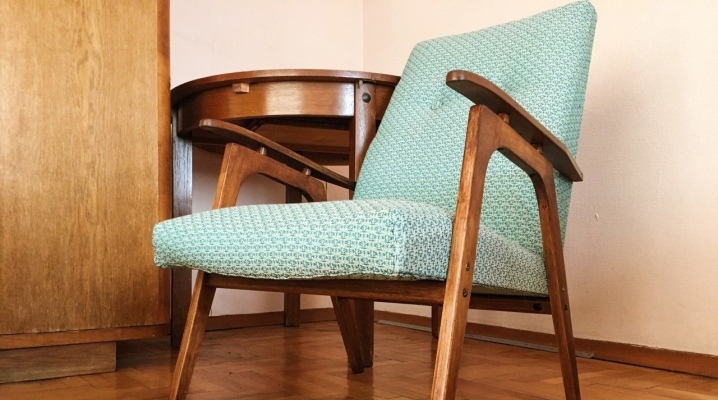
Interest in furniture of the Soviet period, especially in the 50s and 60s, has revived today with renewed vigor. It cannot be said that such a story under the motto "forward into the past" is inherent only in Russian interior fashion. The trend in the West is also turning to interiors of the 70s and earlier periods. Only if in accounts dedicated to home design you can see unadorned furniture, on which time has left its mark, in the post-Soviet space, furniture restoration is not so delicate.
Sometimes a converted sofa or armchair is already quite far from its previous image. If you are a fan of retro aesthetics and do not want to turn furniture from the past into a modern model, you can organize a technical restoration.

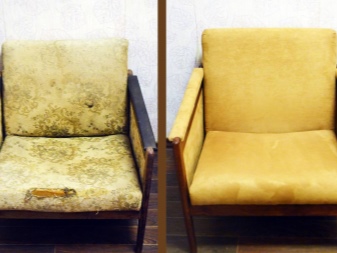
Peculiarities
Previously, furniture from the times of the USSR was taken to landfills without a twinge of conscience or, at best, sent to the country. It seemed that a polished table or a full-wall headset would never again become relevant. Today, fashion, which has made another round, believes that the same polished table can become a highlight of the interior, and the old grandfather's chair will perfectly fit into the cozy picture of your living room.


Furniture of the period of the "Khrushchev thaw" can be considered especially in demand. The pace of housing construction was then really shock, and it had to be furnished with something.
Small apartments would not accommodate the bulky, massive furniture of the earlier Soviet period, so the designers of the "thaw" were inspired by the concept of minimalism.
To reduce the cost of furniture, affordable and cheap materials began to be used: chipboard, plywood, polymers. This is why armchairs and sofas with wooden backs and armrests purchased in the 30s could still be in more solid condition than armchairs from the 60s. During the "thaw" period, more and more lacquerware began.
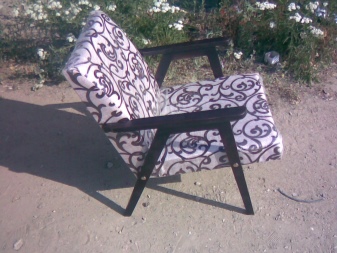
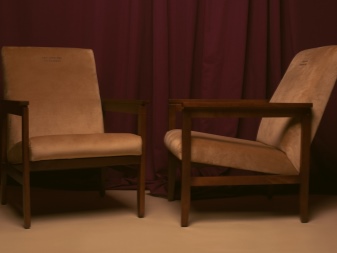
Armchairs were sold in most cases in sets: they could come as a set along with a sofa or coffee table. These were mainly models with wooden armrests. They were not quite comfortable - the minimalist concept did not imply that the home chair would be conducive to relaxation. But a modern person misses such furniture from childhood, is imbued with its brevity, unpretentious aesthetics and wants to see it in his interior.
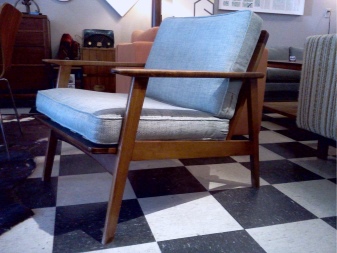
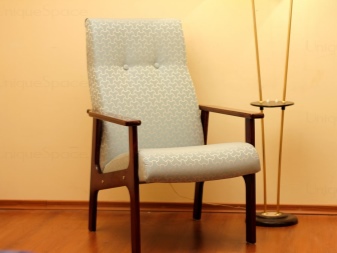
Varieties
Furniture of the 60s, 70s was reliable and compact, then natural materials were even more actively used (although budget options were also involved).
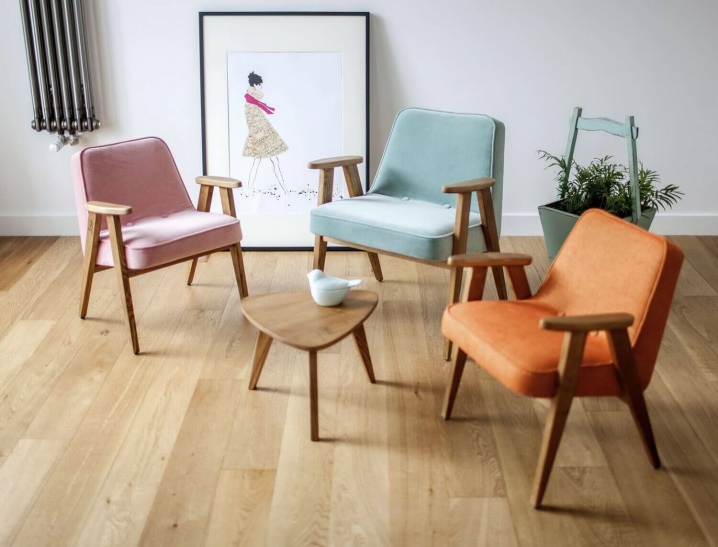
A lot of furniture was made with high legs, which made it seem more lightweight.
Below are the popular options for Soviet armchairs.
- Furniture of the 30s-50s today it is considered antique, it embodies the Soviet empire style, in which features of the baroque, and even the imperial style of Napoleon I, and, of course, late classicism are guessed. The chairs also looked pompous and monumental. It is impossible to say that today there is a demand for just such a variant of chairs. And it is very difficult to get such models.
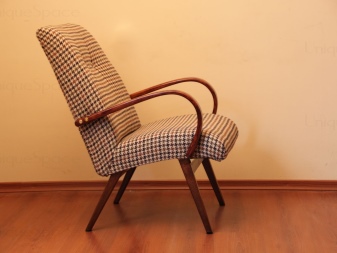

- Furniture of the late 50s, 60s - this is more democratic, affordable furniture. A small armchair with wooden armrests became the model of how an armchair in a living room should look for many years to come. It was part of the furniture set, and such sets were in demand right up to the restructuring (and even a little longer).
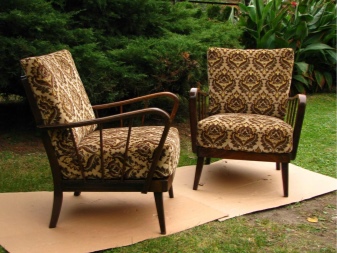

- In the same 60s a chair-bed appeared; these models began to be produced more massively in the 70s.Its appearance is dictated by the small footage of apartments, where one more full-fledged bed simply would not have risen.
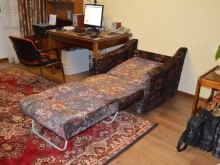

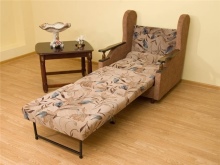
In the late 90s, in the 2000s, armchairs with wooden armrests became not only not fashionable - they were associated with an old-fashioned and tasteless interior, did not fit into the new realities in any way: with stretch ceilings, leather sofas, gilding and sparkles.
Today, the ideas of simplicity and brevity are back in fashion.
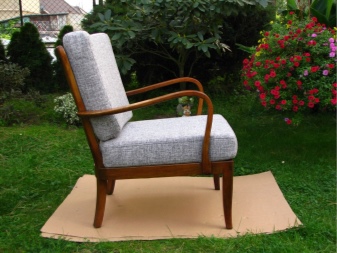
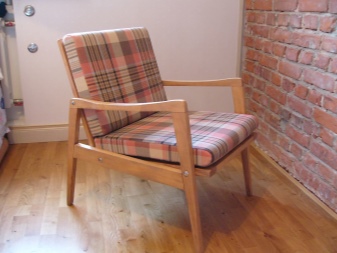
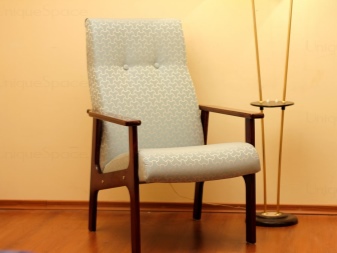
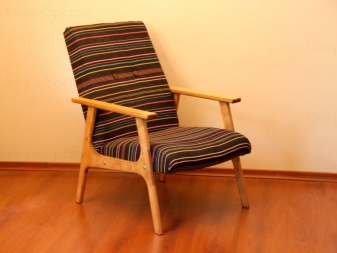
Pomp and pretensions to chic, on the contrary, are ridiculed and seem old-fashioned, and neat armchairs that fit into a modern interior with Scandinavian notes have become a design sign of a new time.

DIY restoration
Refurbishing an old chair may be easier than you thought. This will save money that could have gone into buying a new one, possibly made in the spirit of the 70s.

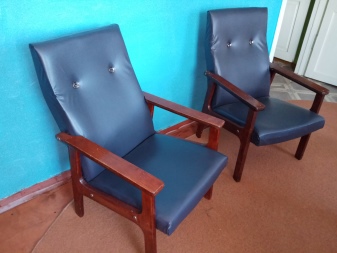
Padding
If you are sure that the chair does not need any other repairs, you can really restrict yourself to just the hauling. The framework will not be affected. The upholstery fabric is changed: either it is attached over the old one, or the old upholstery is completely dismantled.

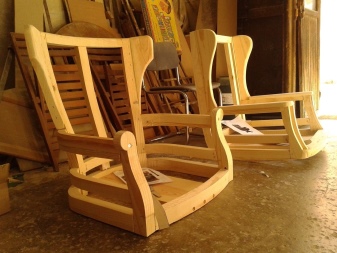
For constriction, the following fabrics are used:
- velor or corduroy;
- flock;
- tapestry;
- jacquard;
- eco-leather;
- chenille;
- microfiber.
To remake the chair, you need to disassemble it, unscrew the bolts securing the legs to the frame. The armrests are removed, the bottom of the furniture is disassembled. After that, the old upholstery can be removed from the seat, backrests, if the armrests were soft, and from them too.
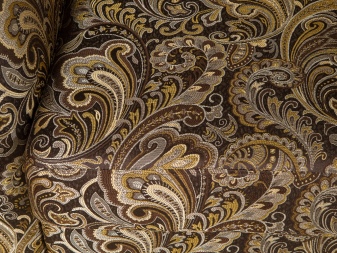

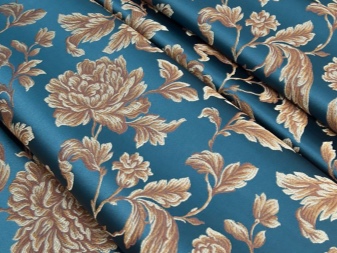
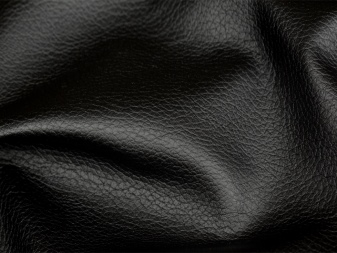
Many people simply apply the old upholstery to the new fabric, and these patterns are used to create patterns for the new “clothes” of the chair.
Replacement of foam rubber is also mandatory - even from the point of view of sanitary and hygienic standards, this must be done. Attach the springs to the bottom, then insert a new filler, fix the structure with inner upholstery (crinoline is suitable for it).
The details of the cross are attached to the frame, and the chair is sheathed with an outer fabric. The constriction in most cases involves the reconstruction of the soft spot. Furniture with wooden armrests is often completely renovated.
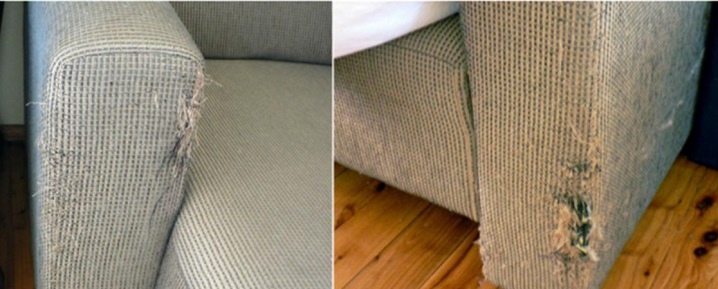
Repair
This is the name of the general view of the restoration work. This is an upholstery, and a constriction, and a complete replacement of the base. First, an inspection of the structure is carried out, an analysis of possible alterations is carried out. The chair has to be completely disassembled to see if not only the external elements (for example, legs) need to be replaced, but also the internal ones: metal parts, springs.
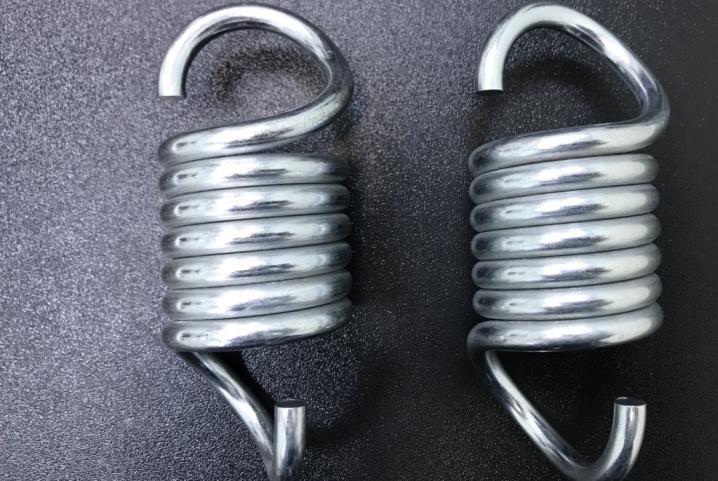
Surface restoration requires the use of paints and varnishes, replacement of parts, sometimes new legs or even armrests are needed. Sometimes the chair rises in height. Such manipulations are often performed with models that are considered heirloom. Or, if the person who removes the chair understands that it is almost impossible to find a chair of this configuration on sale. And it is better to convey the spirit of the time with the help of objects that have become its "witnesses".
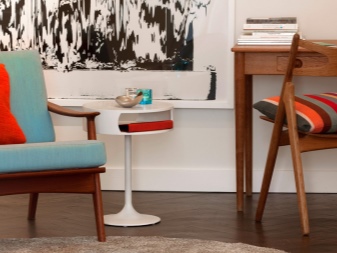
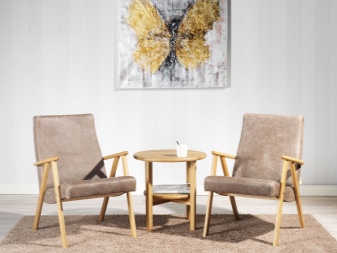
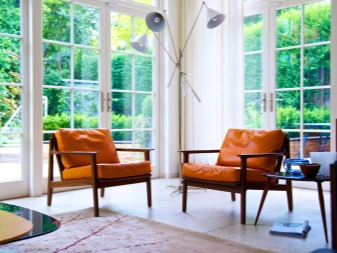
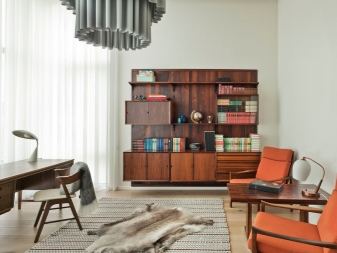
Upholstery
This is the name of the restoration method that suits chairs with a rigid base. The furniture is upholstered strictly in geometry with a fabric under which there is foam rubber. It is necessary to remove the fabric, replace the foam rubber, and upholster the structure again.
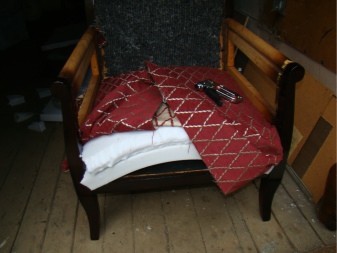
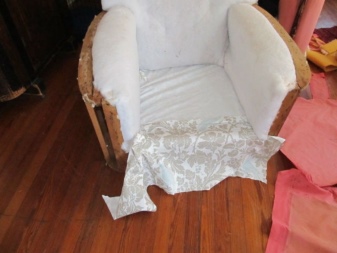
In this case, the contours of the upholstery should not change, and the wooden base should not be damaged during the restoration.
Algorithm of actions:
- remove the trim;
- remove the filler along with its retainers;
- cut new upholstery according to old patterns;
- check the structure - does it seem loose, if there are any problems with the frame;
- fix the filler on the base with a stapler, which is sheathed with new upholstery.
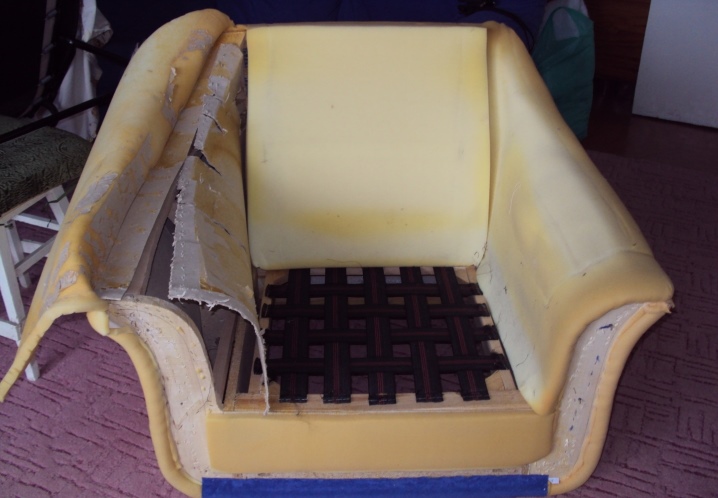
There are a lot of design options for the updated armchair - the upholstery really significantly changes the look of the furniture. You can choose a fabric that will perfectly sparkle against the background of the room's wallpaper, curtains, and existing textiles. Or you can pick up a new upholstery that will repeat as much as possible the old version you love.
Soviet furniture can be a godsend if your home is friendly with styles such as Scandinavian, Classic, Retro, Minimalism and Provence. If you have to deal with the restoration of furniture from the 60s, made of fiberboard, you will most likely need opaque paint, new fittings. Well-preserved furniture only needs a timely polish.
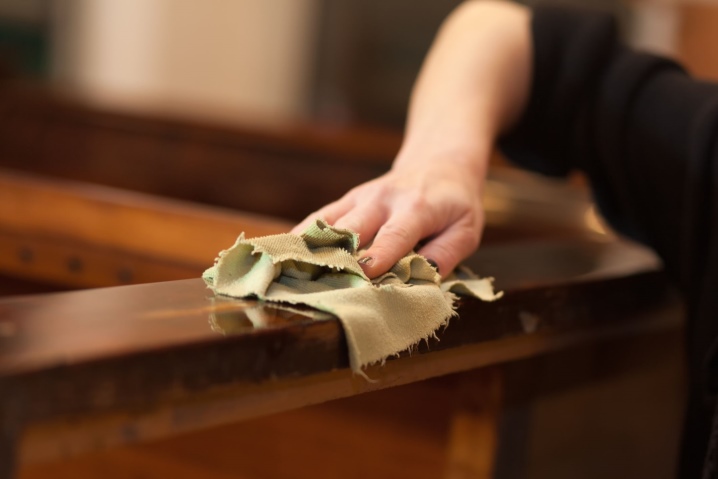
Retro furniture is an affordable, albeit laborious, solution to an interior issue. Look through the accounts of Western bloggers, see how much in their homes is that from which the post-Soviet man tried with all his might to get away. Perhaps you will look differently at these concepts, full of comfort, simplicity and the genuine charm of modesty.
How to restore an old chair, see below.













Thank you for the article. Nice chairs.
The comment was sent successfully.